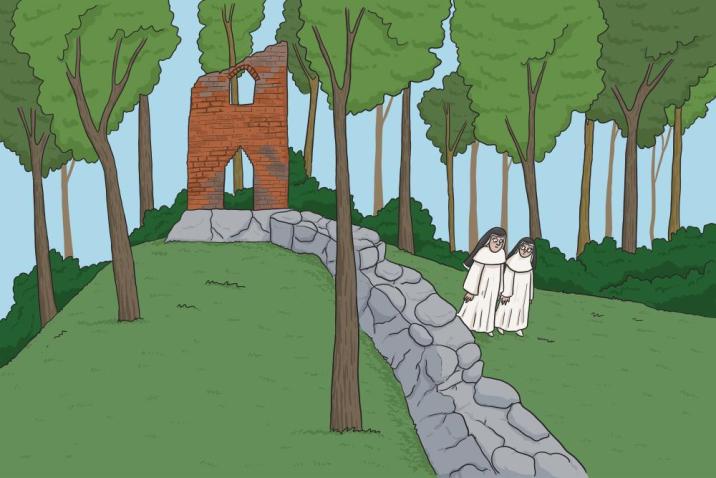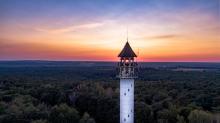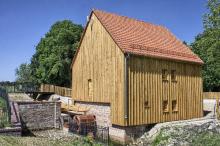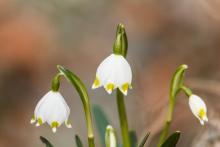 Web Content Display
Web Content Display
Z historią za pan brat!
Od połowy XIII wieku przez ponad 500 lat wieś Radojewo wchodziła w skład dóbr klasztoru Cysterek w Owińskach. Po trzecim rozbiorze Polski zakon zlikwidowano, a Owińska i Radojewo przejęła niemiecka rodzina von Treskow.

Mit Geschichte vertraut
Seit der Hälfte des 13. Jahrhunderts war das Dorf Radojewo fünfhundert Jahre lang ein Teil des Guts des Zisterzienserinnenklosters in Owińska. Es war eines der ersten Dörfer das die Ziesterzienserinnen erhalten haben nach ihrer Ankunft in Großpolen (Wielkopolska). Herrscher beschenkten das Kloster großzügig, deshalb verfügte es immer über ein beträchtliches Vermögen. Die Nonnen hatten das ausschließliche Recht u.a. zum Fischfang, Honig- und Holzernte. Sie waren berühmt für die Produktion von Holzkohle und Teer. Asche die bei der Holzverbrennung entstand, war eine Quelle von Kalisalz – einer Substanz die Kalium enthält, gebraucht u.a. für Lebkuchenbacken, Herstellung von Stahl und Glas.
Nach der dritten Teilung Polens (Jahr 1795) wurde das Kloster aufgelöst; Owińska i Radojewo wurden von der deutschen Familie von Treskow übernommen. Das Oberhaupt der Familie, der Berliner Fabrikant Sigmund Otto Joseph, der kurz zuvor einen Adelstitel erhielt, wählte Owińska als seinen Sitz. Radojewo wurde zum Eigentum seines Sohnes Heinrich Balthasar, der sich entschließ dort ein Schloss mit Park und Aussichtsachse zum Schloss in Owińska zu bauen. Das Parkdesign in Radojewo wurde durch Teiche, künstliche Höhen und Gartenbauten bereichert.
Bis heute kann man die romantische Ruine bewundern - sie imitiert die Überreste einer gotischen Burg - und den Friedhof wo die Angehörigen der Familie von Treskow begraben wurden. Nach dem zweiten Weltkrieg wurde das Schloss zum Staatseigentum. Erst wurde dort eine Schule geführt, später diente es als Wohngebäude. Derzeit wird der Park von dem Forstamt Łopuchówko verwaltet; die gesamte Anlage wurde in das Denkmalregister eingetragen unter dem Namen „Schlosspark in Radojewo“.

On familiar ground with history
Since mid-13th century, the village Radojewo was part of the property of the Cistercian convent in Owińska for 500 years. Radojewo was one of the first villages the Cistercian received after reaching the region Greater Poland (Wielkopolska). The lords were generous givers to the convent, so it disposed of a sizable fortune. The nuns had among others exclusive fishing rights, as well as for harvesting wood and honey extraction on its territory. They were famous for charcoal and tar production. The ash produced during wood burning was the source of potash, that is a substance containing potassium, used e.g. for baking gingerbreads, steel and glass products.
After the third partition of Poland in 1795 the convent was closed down; Owińska and Radojewo were taken over by the German family von Treskow. The family patriarch Sigmund Otto Joseph, a Berlin manufacturer who received beforehand the title of nobility, chose Owińska as his dwelling place. Radojewo became the property of his son Heinrich Balthasar who decided to build there a palace surrounded by a park and connected via a panorama axis with the palace in Owińska. The splendid composition of the Radojewo park consisted of ponds, artificial hills and garden constructions.
Up till now we can admire the romantic ruin imitating the remains of a gothic castle and the cementary where members of the von Treskow family were buried. After World War II the palace became state property. First, a school functioned inside, then it was used for housing. Today, the park is being managed by the forest district Łopuchówko; the entire complex is enlisted in the register of historical monuments under the name “The Manor Park in Radojewo”.












